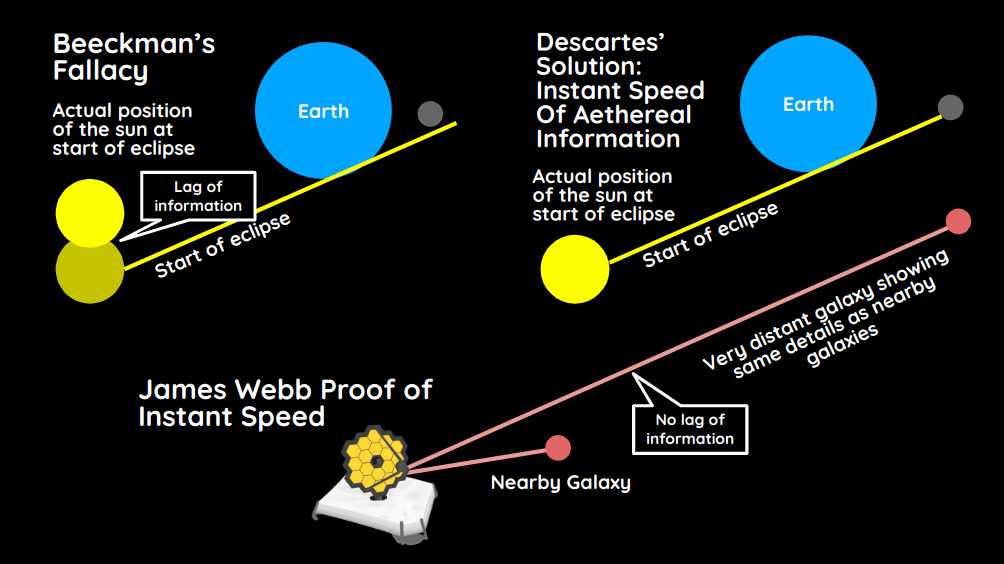Letter to Beeckman
Table of Contents
I did not say that light instantaneously moves to the eye from the light-emitting body.
I said it instantaneously arrives at the eye from the light-emitting body.
In your letter you say that there is no difference between the two. You are wrong on both points.
I was so certain of this that if it were shown to be false I would admit that I knew absolutely nothing in philosophy.
You, on the other hand, maintained that light can move only in time.
You added that you had thought up an experiment to show which of us was mistaken:
In the night someone holds a torch in his hand and waves it around while watching the reflection in a mirror a quarter of a mile away. He will be able to tell whether he feels the movement in his hands before he sees it in the mirror.
You were so sure of the outcome of this experiment that you admitted that your entire philosophy would have to be regarded as false if there was no observable time-lag between:
- the instant when the movement was felt by the hand
- the instant it was seen in the mirror.
If such a time-lag was detected, my philosophy would be completely overturned.
The issue was not so much whether light travels instantaneously or whether it takes time to get anywhere.
Rather the issue is What will the outcome be of this experiment?
But the next day, wanting to be done with this dispute and to save you from pointless labour, I told you of another experiment which shows clearly that there is no time-lag between the instant the light is emitted from the luminous body and the instant it enters the eye.
This experiments was already carefully done by many attentive observers.
First, there was the issue of your experiment.
I asked you to settle what the smallest observable interval would be between t1 when the torch is moved and t2 when the movement appears in the mirror 1/4 mile away.
The day before, you stipulated that this time-interval would have to be at least as short as a single pulse beat.
But then more liberally you allowed that it could be as short as I liked.
I assumed that the interval was no longer than 1/24 of a pulse beat. You agreed that that interval would be:
- undetectable in your experiment
- perfectly detectable in mine.
To explain this experiment to you, I first asked whether you thought:
- that the moon gets its light from the sun and
- that eclipses occur because the earth comes between the sun and the moon or the moon comes between the sun and the earth.
You answered Yes to both. I then asked how you suppose the light from the sun and the stars reaches us.
You replied ‘in straight lines’.
Therefore, you believe that we never see the sun in its true position. We only see it where it was when that light that we see was emitted.
If the distance between the moon and the earth is 50 times the earth’s radius which is at least 600 miles long.
If light takes 1/24 of the interval of a pulse beat to cross a quarter of a mile twice, it will take an interval of 5,000 pulse beats, i.e at least 1 hour, to cross the space between the moon and the earth twice.
Let T be a time at which we on earth see the moon starting to undergo an eclipse when the sun, earth and
moon are coming to be on a straight line at that time.
If light travels at not greater than 12 miles per pulse-beat then they are not in a straight line.
- This is because the eclipse as we see it is where the sun was 1 hour ago, when its position relative to the earth was different (Descartes is careful to say that it doesn’t matter whether it’s the sun or the earth that is moving!)
The careful and painstaking observations of every astronomer testify, and countless experiments confirm, that when the moon is seen from earth to be undergoing an eclipse, the sun and earth and moon are in a straight line.
This shows that light takes no detectable time to travel a vast distance, whereas your experiment doesn’t show anything either way.
I claimed that this argument is conclusive. You called it fallacious and question-begging.
